The rising generation of front-office talent is steeped in numbers and percentages. There is a reflexive need to construct all decisions and investments on data bedrock. Maybe players and agents frustrated by the thin free-agent offers this winter shouldn't be surprised because, increasingly, baseball teams weigh contracts like insurance salesmen: They assess risk.
More and more, the overwhelming industry trend is to bet against risk. Which is not a bad thing, by the way. A longtime executive said drolly, "Intelligent decisions are good."
Through this constant risk assessment, some evaluators think, teams are increasingly wary of injury potential and are gravitating toward players who actually get on the field -- pitchers who make their starts and position players commonly available to be in the lineup. This trend is reflected in the lists collected for our ongoing top 10 series, which continues with a ranking of the top 10 rotations.
The New York Mets present a classic example. Pitcher for pitcher, they probably have more pure talent in their rotation than any other team, with Noah Syndergaard's overpowering stuff, Matt Harvey's fastball, etc. "But they need to actually get out there and do it," one executive said. "It's one thing to have a great arm, but you have to show that you can give 180-200 innings."
With that in mind, here are the top 10 rotations, based on input from evaluators.
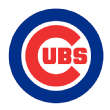 1. Chicago Cubs (Jon Lester, Jake Arrieta, Kyle Hendricks, John Lackey, Mike Montgomery, et al.)
1. Chicago Cubs (Jon Lester, Jake Arrieta, Kyle Hendricks, John Lackey, Mike Montgomery, et al.)
At least some of the Cubs' pitching success in 2016 can be attributed to the team's historically great defense -- the team typically fielded elite defenders in four of its eight positions -- but the Chicago starters helped themselves a whole lot as well. Although Joe Maddon began to limit the work of his rotation as the Cubs' NL Central lead increased and the team was positioned to look ahead to the postseason, the starters still finished first among all NL teams in innings pitched. Jon Lester has pitched at least 190 innings in nine straight seasons. John Lackey has 11 seasons of 175 or more innings. Over the past two years, Jake Arrieta has thrown 468 1/3 innings in the regular season and postseason combined. Kyle Hendricks, the winner of the NL ERA title last season, has 69 starts the past two years. It’s a durable group.
The Cubs intend to give Mike Montgomery a chance to be the No. 5 starter after seeing firsthand the promise of his off-speed stuff. But the Cubs have been talking with free agent Tyson Ross, and even if they cannot land him, they could add other arms.
The difference between good and great for the Cubs' rotation: Arrieta, who can be as dominant as any pitcher on his best day and a puzzle on his worst day. With Arrieta set to become a free agent in the fall, he has a lot riding on this season.
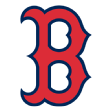 2. Boston Red Sox (Rick Porcello, David Price, Chris Sale, Steven Wright, Drew Pomeranz, Eduardo Rodriguez)
2. Boston Red Sox (Rick Porcello, David Price, Chris Sale, Steven Wright, Drew Pomeranz, Eduardo Rodriguez)
After the Red Sox traded for Chris Sale, Yankees general manager Brian Cashman was only sort of kidding when he compared Boston to the Golden State Warriors after their acquisition of Kevin Durant -- the best team in the division adding the best available player. On paper, no AL team can compete with the résumés of the Red Sox starters: Rick Porcello, the reigning Cy Young Award winner; David Price, a former Cy Young Award winner; Steven Wright and Drew Pomeranz, both All-Stars last season. (Eduardo Rodriguez has had knee problems the past year and carries some questions going into spring training).
Some evaluators want to see how Porcello backs up his Cy Young season, Sale's angular delivery always makes scouts cringe, and Price's fastball velocity has dipped. But the durability of that workaholic trio has been extraordinary. Sale has averaged about 200 innings a year the past five seasons, Price led AL starters in innings last season with 230, and the 28-year-old Porcello will approach 1,700 career innings by the end of 2017.
Price talked at year's end about how he needs to do better, especially in the postseason, but some of the peripheral numbers suggest he was somewhat unlucky in 2016. He was 11th among all starting pitchers in xFIP, a fielding-independent metric -- better than Sale or Madison Bumgarner -- and he had the 14th-worst BABIP, batting average on balls in play, at .310.
On the most recent Baseball Tonight podcast, Red Sox President David Dombrowski talked about his rotations and the pitchers penciled into the No. 4 and No. 5 spots.
The difference between good and great for the Boston rotation: Wright, whose knuckleball refinement had him positioned among midseason Cy Young candidates. He hurt his shoulder in a pinch-running appearance and went on the disabled list. Although he was on the cusp of a return when the Red Sox were eliminated, the tenuous success of knuckleball pitchers makes him a question mark as spring training begins. If he returns to his 2016 excellence, this rotation could be extraordinary.
 3. New York Mets (Noah Syndergaard, Jacob deGrom, Steven Matz, Matt Harvey, Seth Lugo, Robert Gsellman, Zack Wheeler)
3. New York Mets (Noah Syndergaard, Jacob deGrom, Steven Matz, Matt Harvey, Seth Lugo, Robert Gsellman, Zack Wheeler)
All of the medical reviews for the Mets' recovering pitchers -- Steven Matz, Jacob deGrom, Matt Harvey, Zack Wheeler -- have been good this winter. Harvey, who is recovering from thoracic outlet syndrome, is throwing and is expected to be ready at the beginning of the season or close to it. The 2017 Mets should benefit from the rash of rotation injuries last season because of the unexpected and successful turns that Seth Lugo and Robert Gsellman took in the rotation and the emergence of Noah Syndergaard as one of baseball's best pitchers.
The difference between good and great for the Mets' rotation: Harvey, who had a 2.53 ERA in his first 65 starts in the big leagues before posting a 4.86 ERA in a 2016 season shortened by injury.
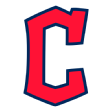 4. Cleveland Indians (Corey Kluber, Carlos Carrasco, Danny Salazar, Josh Tomlin, Trevor Bauer)
4. Cleveland Indians (Corey Kluber, Carlos Carrasco, Danny Salazar, Josh Tomlin, Trevor Bauer)
The Indians' championship run should continue for at least a couple more seasons, largely because of the per-dollar performance the team gets from the leaders of this group. Corey Kluber, who won the Cy Young Award in 2014 and finished third last year, is signed through the 2019 season, with club options for 2020 and 2021. Carlos Carrasco has two years left on his deal, plus club options for 2019 and 2020. Danny Salazar has two-plus years of service time. Because a small-market team such as the Indians is in strong position with high-end starting pitching -- the most expensive element in the sport -- a lot of other stuff is possible, such as the late and surprising run at Edwin Encarnacion.
The difference between good and great for the Cleveland rotation: Salazar, who had arm issues in the middle and at the end of the 2016 season. He was pretty good when he pitched, posting a 2.22 ERA for the first three months of the season. Without Salazar, the Indians will face some depth questions.
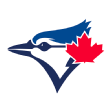 5. Toronto Blue Jays (J.A. Happ, Marcus Stroman, Marco Estrada, Francisco Liriano, Aaron Sanchez)
5. Toronto Blue Jays (J.A. Happ, Marcus Stroman, Marco Estrada, Francisco Liriano, Aaron Sanchez)
Yes, the Toronto offense could look very different -- less potent -- now that Encarnacion is gone, and Jose Bautista would return only through a total contractual capitulation. But the best part of the Jays in 2016 was their deep and talented rotation, which has a chance to be even better in the upcoming season as Aaron Sanchez develops. Because of his physical maturity and climb to almost 200 innings last season, the question of how many innings he should throw will evaporate, and there were times last season when Sanchez was as dominant as any AL pitcher. Toronto led the AL in starters' ERA last season. J.A. Happ had a 3.18 ERA, Marco Estrada had 3.48, and Marcus Stroman had 3.34 in his last nine starts.
The difference between good and great for the Toronto rotation: Francisco Liriano, who excelled in his 10 outings for the Jays last season. The Cubs’ Jon Lester has always been better when working with David Ross, and the same might be true for Liriano with Russell Martin: In 42 games in which he worked with Martin, Liriano has a 2.92 ERA, and his ERA is more than a run higher with all other catchers.
 6. San Francisco Giants (Madison Bumgarner, Johnny Cueto, Jeff Samardzija, Matt Moore, Matt Cain, Ty Blach)
6. San Francisco Giants (Madison Bumgarner, Johnny Cueto, Jeff Samardzija, Matt Moore, Matt Cain, Ty Blach)
The Giants were fourth among NL teams in starters' ERA last year, with top-10 pitchers Madison Bumgarner and Johnny Cueto leading the way. This year, San Francisco will have Matt Moore in the rotation from the outset.
Matt Cain is entering the final year of his long-term deal, which means he'll probably get one last shot to hold down a spot in the rotation. In 49 games over the past three seasons, Cain has a 5.13 ERA, and if he doesn’t rebound, Ty Blach could step into the last spot.
The difference between good and great for the Giants' rotation: Cueto. The Giants made an investment in Cueto that scared other teams after his arm issues in 2015, yet he was almost as durable and outstanding as Bumgarner through 2016, throwing at least seven innings in 18 of his starts.
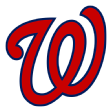 7. Washington Nationals (Max Scherzer, Stephen Strasburg, Tanner Roark, Gio Gonzalez, Joe Ross)
7. Washington Nationals (Max Scherzer, Stephen Strasburg, Tanner Roark, Gio Gonzalez, Joe Ross)
Max Scherzer is a two-time Cy Young Award winner and the backbone of this group, but Tanner Roark has had enough success that he should be regarded as a solid No. 2/No. 3 starter. In his past two full seasons as a member of the Washington rotation, in 2014 and 2016, he posted ERAs of 2.85 and 2.83. No pitcher generated a lower percentage of hard-hit balls than Roark, according to Fangraphs.
The difference between good and great for the Washington rotation: Stephen Strasburg. His career ERA is 3.17, with more than a strikeout per inning. But since he reached the big leagues in 2010, he has two seasons of more than 28 starts and just one year (2014) when he reached 200 innings. He made one appearance after Aug. 17 last season.
 8. Los Angeles Dodgers (Clayton Kershaw, Rich Hill, Kenta Maeda, Julio Urias, Scott Kazmir, Brandon McCarthy, Ross Stripling, Hyun-Jin Ryu)
8. Los Angeles Dodgers (Clayton Kershaw, Rich Hill, Kenta Maeda, Julio Urias, Scott Kazmir, Brandon McCarthy, Ross Stripling, Hyun-Jin Ryu)
The Dodgers' ability to overcome rotation injuries in 2016 became part of the short-term lore of the team. But that risk is built within the fabric of the roster, as Kenta Maeda, Scott Kazmir, Hyun-Jin Ryu and Brandon McCarthy all bear extensive histories of arm maladies. Some folks within the Dodgers organization were surprised that Clayton Kershaw held up as long as he did before his back trouble took him down last season, given the nature of his discomfort, but the team is hopeful that he'll be OK in the year ahead. Julio Urias threw less than 130 innings last season and demonstrated that he is more than worthy of the hype: He had a 1.99 ERA in his last 10 appearances, with 40 strikeouts, 14 walks and just one home run allowed in 40 2/3 innings.
The difference between good and great for the Dodgers' rotation: Rich Hill. The Dodgers paid good money ($48 million over three years) to keep Hill, who is the rare case of a non-knuckleball pitcher who emerged in his mid-30s. Hill, who turns 37 in March, has a 2.00 ERA in 24 starts the past two seasons. But as with a number of L.A. starters, there are major questions. First and foremost: Can he stay healthy? Will he be able to continue spinning his vicious curveball? Or will he turn into a pumpkin? If Hill pitches to the value of his contract, the Dodgers might well have the majors' best rotation next year.
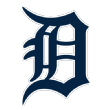 9. Detroit Tigers (Justin Verlander, Michael Fulmer, Jordan Zimmermann, Daniel Norris, Matt Boyd, Mike Pelfrey, Anibal Sanchez)
9. Detroit Tigers (Justin Verlander, Michael Fulmer, Jordan Zimmermann, Daniel Norris, Matt Boyd, Mike Pelfrey, Anibal Sanchez)
Justin Verlander is healthy again and has returned to being a Cy Young Award candidate. Michael Fulmer won the AL Rookie of the Year Award. The Tigers have pretty good rotation depth with Daniel Norris and Matt Boyd. But they really don’t have any clear sense of what they'll get out of two of their pivotal veterans: Anibal Sanchez, who had a 5.87 ERA in 2016 and is entering the final year of his contract in 2017, and Jordan Zimmermann.
The difference between good and great for the Tigers’ rotation: Zimmermann. The Tigers signed him to a five-year, $110 million deal last winter, and already there are questions in the industry about whether he's healthy. His command is diminished with his strikeout/walk ratio plummeting from 6.28 in 2014 to 2.54 last year, and opponents pounded him for an .804 OPS last season. Zimmermann doesn’t have to be Cy Young caliber for the Tigers to be contenders, but they need something decent out of him, given their investment.
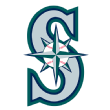 10. Seattle Mariners (Felix Hernandez, Hisashi Iwakuma, Drew Smyly, James Paxton, Yovani Gallardo)
10. Seattle Mariners (Felix Hernandez, Hisashi Iwakuma, Drew Smyly, James Paxton, Yovani Gallardo)
The addition of Gallardo and Smyly gives the Mariners the kind of rotation depth necessary to compete in the increasingly competitive AL West.
The difference between good and great for the Mariners' rotation: Felix Hernandez is approaching 2,500 innings in his career, and it's absolutely essential for Seattle that he remain healthy and productive, given how much of the Mariners' payroll he assumes. Last season, King Felix was limited to 25 starts and threw his fewest innings since 2007. He also scored 4.45 on his xFIP, a fielding independent metric, the worst of his career.
Honorable mention
St. Louis Cardinals: Alex Reyes presumably will take on a greater role behind Carlos Martinez, and the Cardinals will be looking for rebounds from Adam Wainwright and Lance Lynn, who missed all of 2017 following Tommy John surgery. The difference between good and great: Mike Leake. Virtually all of his underlying numbers in 2016 were about the same as they were in 2015. But he went from pitching in front of an excellent defense in Cincinnati to working with one of baseball's worst defenses in St. Louis, and for someone who pitches to contact, the difference was disastrous. This year, Leake should be helped by the seeming commitment to Kolten Wong as the second baseman and Matt Carpenter as the first baseman, along with the added experience of Aledmys Diaz.
Tampa Bay Rays: This group has the potential to be the best in the American League, as it did at the outset of 2016. But Chris Archer has to get back to being a Cy Young Award-level performer.
